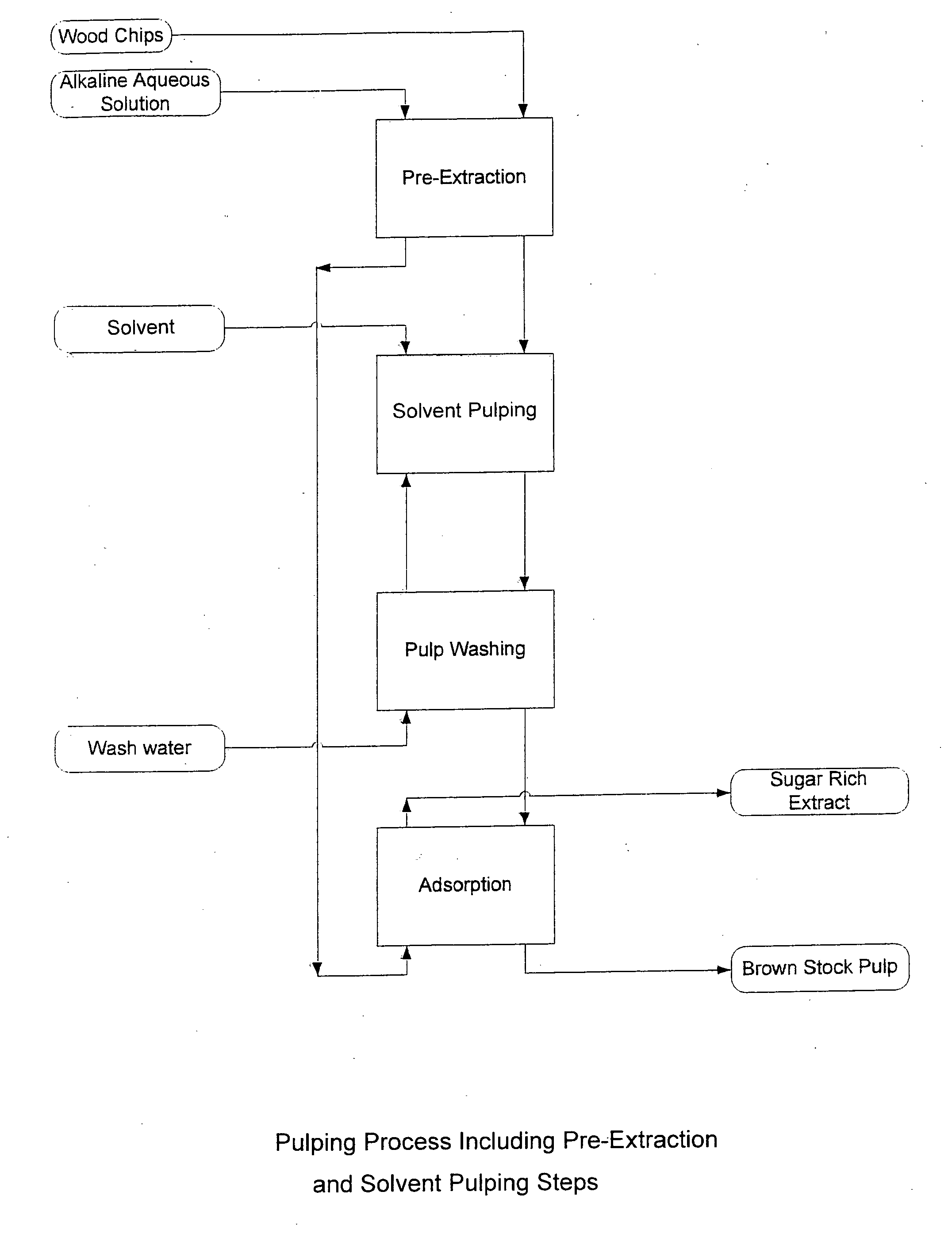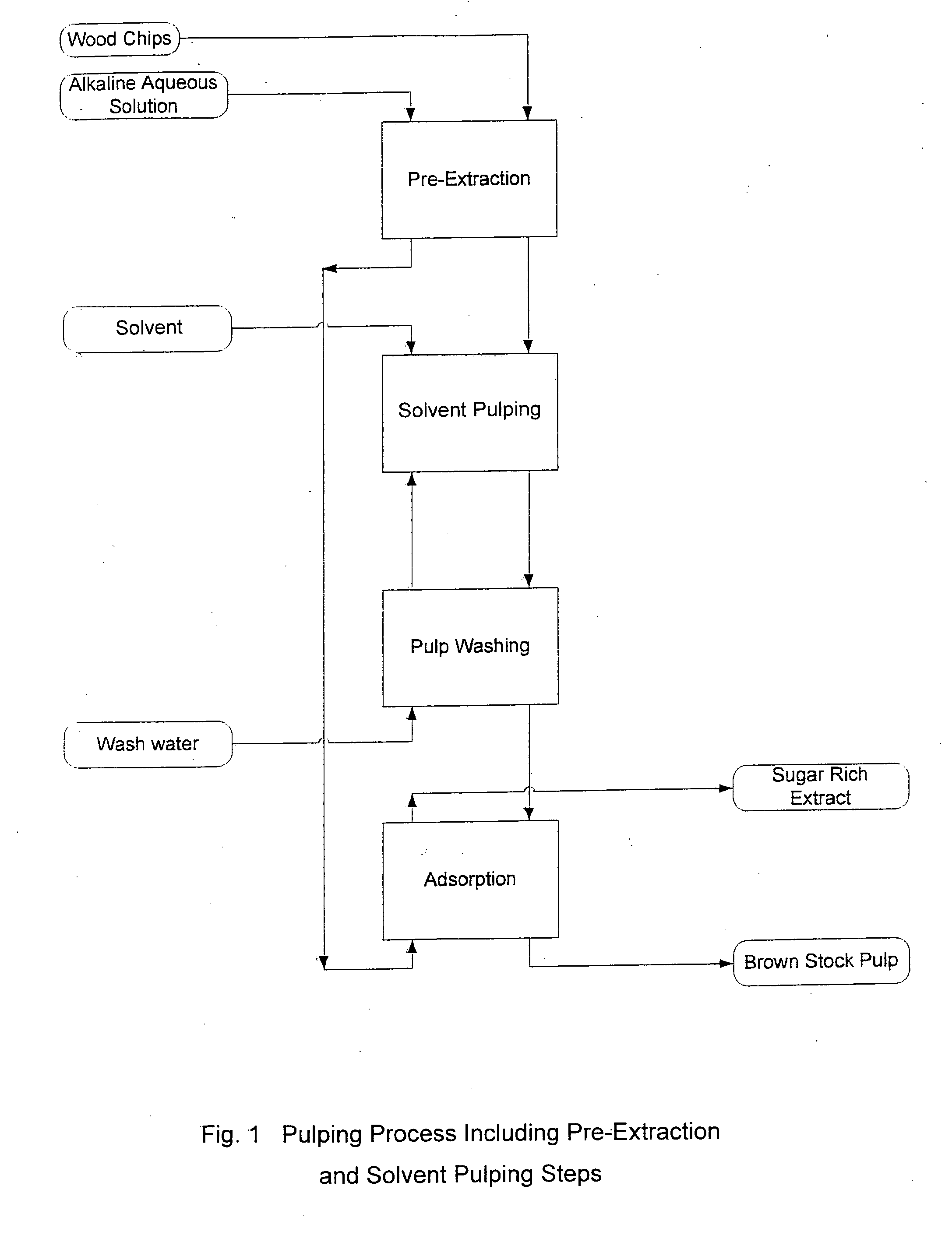Pre-extraction and solvent pulping of lignocellulosic material
- Summary
- Abstract
- Description
- Claims
- Application Information
AI Technical Summary
Problems solved by technology
Method used
Image
Examples
Embodiment Construction
[0010]The lignocellulosic material which is treated in the process can be any plant material made up primarily of cellulose, hemicellulose and lignin. In some embodiments the lignocellulosic material is wood, such as hardwood or softwood. The lignocellulosic material can be in any suitable form at the start of the process. In some embodiments the lignocellulosic material is in a comminuted form, for example in the form of wood chips. FIG. 1 is a block diagram of a process according to one embodiment of the invention. It is seen that the process starts with wood chips.
[0011]As shown in FIG. 1, the wood chips are subjected to a pre-extraction step of the process. Conventional wood pulping processes do not include such a pre-extraction step. In the pre-extraction step, hemicellulose and other components are extracted from the wood chips. In some embodiments, the pre-extraction step extracts at least about 4%, more particularly at least about 8%, of the lignocellulosic material as measu...
PUM
| Property | Measurement | Unit |
|---|---|---|
| boiling point | aaaaa | aaaaa |
| temperature | aaaaa | aaaaa |
| temperature | aaaaa | aaaaa |
Abstract
Description
Claims
Application Information
 Login to View More
Login to View More - R&D
- Intellectual Property
- Life Sciences
- Materials
- Tech Scout
- Unparalleled Data Quality
- Higher Quality Content
- 60% Fewer Hallucinations
Browse by: Latest US Patents, China's latest patents, Technical Efficacy Thesaurus, Application Domain, Technology Topic, Popular Technical Reports.
© 2025 PatSnap. All rights reserved.Legal|Privacy policy|Modern Slavery Act Transparency Statement|Sitemap|About US| Contact US: help@patsnap.com


